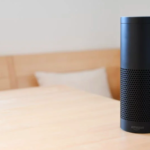Pressure transmitters reliably allow for pressure monitoring in different industrial fields. Its key functional design elements are geared towards fulfilling performance characteristics that improve the accuracy, efficiency, and safety in a wide range of applications. Different measurands have varying measurement principles and measuring equipment.
You should be familiar with the pressure measurement requirements of your plant to choose the best suited one. In this write up, we aim to provide information on the basic measuring principle of pressure transmitters, to help you determine their suitability for your industrial application. Read on!
Pressure Transmitters: Measuring Principle
Pressure transmitters are used in plants and other industrial facilities to determine the pressure difference of different mediums. It does the job by transferring the pressure to a measuring diaphragm that has several interfaces like the signal connection and the pressure connection.
The medium’s pressure difference causes deformation on the interfaces, which is then measured and changed into a digital or analog electrical signal. This signal is perceivable as a measured value. The basic principles are:
Elasticity
The measured value of the pressure quantity in fluids and glasses is achieved when parts of the pressure transmitter go through elasticity. These parts are designed to cater for varying application needs.
The process connections are the key differences when it comes to varying types of pressure transmitters in the market. The elasticity of the tube allows for deformation in the form of curling or straightening.
Fluid Column Height
The manometer is a pressure measurement equipment which mainly uses the height of the medium in its tube to calculate a pressure value. The medium’s weight in the tube is valued against its pressure for accurate communication.
Pascal’s Law
According to this Law, when a medium is under pressure in a limited space, the amount of pressure transfer is equal on all sides. The working principle of pressure transmitters is a perfect illustration of Pascal’s law; measurement occurs at a single point of the interface and is then transmitted to other parts of the connections.
Strain
Pressure can be a resulting effect of strain on a medium. There are various components of measuring equipment like a strain gauge which are used to determine strain-based pressure. They are installed in sensor connections like diaphragms. An output signal is created by the difference in electrical resistance which acts as the measured value.
Capacitance
Some pressure transmitter types apply this working principle; they measure the difference in two parts caused by pressure variation, allowing for a perceivable value.
Pressure Measuring Units
Because pressure can be measured using different equipment, there are different measuring units. The pressure systems in your facility are the main determining factors of the unit used. Pressure units can either be Atmosphere, pascal, bar, torr, etc.
Pressure Transmitter Calibration Basics
Pressure transmitters are undeniably efficient and long-lasting. Nevertheless, you have to exercise proper maintenance and periodic calibration if you want to enhance the aforementioned properties. Excessive calibration can lead to added maintenance costs and more downtime while far-between calibration could affect the quality and performance of your pressure transmitter.
How Frequent?
There are different parameters at play when determining how often you should calibrate a pressure transmitter. Some considerations you should make are:
- The basis of calibration: safety, performance, or for maintenance.
- All the local or national regulations applicable
- Whether the temperature of the installation environment is normal or low humidity
- The type of pressure transmitter
- The stability of the process conditions
- Process disturbances like intense vibrations
- The presence of contaminants in the operation environment
It is important that you calibrate your pressure transmitter after purchase as following the manufacturers’ MPE might prove a costly mistake. Why? You might wonder. The manufacturers’ maximum permissible error is set under controlled conditions, which might be different from your application’s environment.
Additionally, fluctuating performance due to slight degradation of the pressure transmitter components requires you to set an MPE that is practicable, based on your plant equipment.
Conclusion
Pressure transmitters are efficient and durable solutions for determining pressure measurement value. In addition to the measuring principles, there are other essential performance features you should consider if you are in the market for one. Consider the most ideal measuring range for your application and the manufacturer’s standards compliance.
The environmental conditions of your plant are another crucial parameter if you want to minimize the risk of defective pressure transmitters. Microsensor pressure transmitters are developed in consideration of a wide range of industrial requirements. Contact us today for high-accuracy and durable pressure transmitters.










